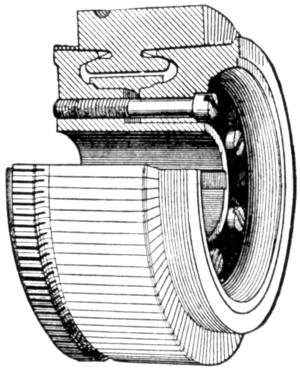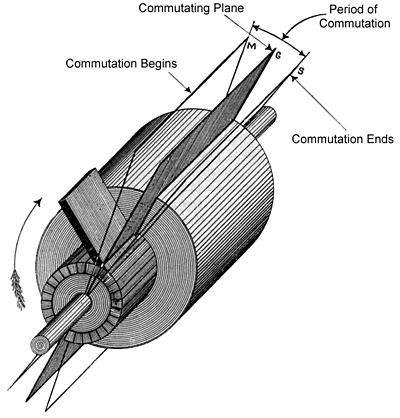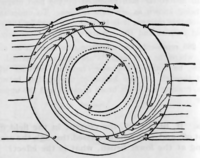The right to education has been recognized as a human right in a number of international conventions, including the International Covenant on Economic, Social and Cultural Rights which recognizes a right to free, compulsory primary education for all, an obligation to develop secondary education
accessible to all, on particular by the progressive introduction of
free secondary education, as well as an obligation to develop equitable
access to higher education,
ideally by the progressive introduction of free higher education.
Today, almost 70 million children across the world are prevented from
going to school each day. As of 2015, 164 states were parties to the Covenant.
The right to education also includes a responsibility to provide
basic education for individuals who have not completed primary education
from the school and college levels. In addition to these access to
education provisions, the right to education encompasses the obligations
of the students to avoid discrimination
at all levels of the educational system, to set minimum standards of
education and to improve the quality of education.is it right
International legal basis
The right to education is reflected in international law in Article 26 of the Universal Declaration of Human Rights and Articles 13 and 14 of the International Covenant on Economic, Social and Cultural Rights. Article 26 states:
"Everyone has the right to education. Education shall be free, at least in the elementary and fundamental stages. Elementary education shall be compulsory. Technical and professional education shall be made generally available and higher education shall be equally accessible to all on the basis of merit. Education shall be directed to the full development of the human personality and to the strengthening of respect for human rights and fundamental freedoms. It shall promote understanding, tolerance and friendship among all nations, racial or religious groups, and shall further the activities of the United Nations for the maintenance of peace. Parents have a prior right to choose the kind of education that shall be given to their children."
The right to education has been reaffirmed in the 1960 UNESCO Convention against Discrimination in Education, the 1981 Convention on the Elimination of All Forms of Discrimination Against Women, the 2006 Convention on the Rights of Persons with Disabilities, and the African Charter on Human and Peoples' Rights.
In Europe, Article 2 of the first Protocol of 20 March 1952 to the European Convention on Human Rights
states that the right to education is recognized as a human right and
is understood to establish an entitlement to education. According to the
International Covenant on Economic, Social and Cultural Rights,
the right to education includes the right to free, compulsory primary
education for all, an obligation to develop secondary education
accessible to all in particular by the progressive introduction of free
secondary education, as well as an obligation to develop equitable
access to higher education in particular by the progressive introduction
of free higher education. The right to education also includes a
responsibility to provide basic education for individuals who have not
completed primary education. In addition to these access to education
provisions, the right to education encompasses also the obligation to
eliminate discrimination at all levels of the educational system, to set
minimum standards, and to improve quality. The European Court of Human Rights in Strasbourg has applied this norm for example in the Belgian linguistic case. Article 10 of the European Social Charter guarantees the right to vocational education.
Definition
Education
is formal institutional instructions. Generally, international
instruments use the term in this sense and the right to education, as
protected by international human rights instruments, refers primarily to education in a narrow sense. The 1960 UNESCO
Convention against Discrimination in Education defines education in
Article 1(2) as: "all types and levels of education, (including such)
access to education, the standard and quality of education, and the
conditions under which it is given."
In a wider sense education
may describe "all activities by which a human group transmits to its
descendants a body of knowledge and skills and a moral code which enable
the group to subsist".[11]
In this sense education refers to the transmission to a subsequent
generation of those skills needed to perform tasks of daily living, and
further passing on the social, cultural, spiritual and philosophical
values of the particular community. The wider meaning of education has
been recognised in Article 1(a) of UNESCO's 1974 Recommendation
concerning Education for International Understanding, Co-operation and
Peace and Education relating to Human Rights and Fundamental Freedoms.
"[T]he entire process of social life by means of which individuals and social groups learn to develop consciously within, and for the benefit of, the national and international communities, the whole of their personal capabilities, attitudes, aptitudes and knowledge."
The European Court of Human Rights
has defined education in a narrow sense as "teaching or instructions...
in particular to the transmission of knowledge and to intellectual
development" and in a wider sense as "the whole process whereby, in any
society, adults endeavour to transmit their beliefs, culture and other
values to the young."
Assessment of fulfilment
The
fulfilment of the right to education can be assessed using the 4 As
framework, which asserts that for education to be a meaningful right it
must be available, accessible, acceptable and adaptable. The 4 As
framework was developed by the former UN Special Rapporteur on the Right
to Education, Katarina Tomasevski, but is not necessarily the standard used in every international human rights instrument and hence not a generic guide to how the right to education is treated under national law.
The 4 As framework proposes that governments, as the prime
duty-bearers, have to respect, protect and fulfil the right to education
by making education available, accessible, acceptable and adaptable.
The framework also places duties on other stakeholders in the education
process: the child, which as the privileged subject of the right to
education has the duty to comply with compulsory education requirements, the parents as the ‘first educators’, and professional educators, namely teachers.
The 4 As have been further elaborated as follows:
- Availability – funded by governments, education is universal, free and compulsory. There should be proper infrastructure and facilities in place with adequate books and materials for students. Buildings should meet both safety and sanitation standards, such as having clean drinking water. Active recruitment, proper training and appropriate retention methods should ensure that enough qualified staff is available at each school.
- Accessibility – all children should have equal access to school services, regardless of gender, race, religion, ethnicity or socio-economic status. Efforts should be made to ensure the inclusion of marginalized groups including children of refugees, the homeless or those with disabilities; in short there should be universal access to education i.e. access to all. Children who fall into poverty should be granted the access of education because it enhances the growth of their mental and social state. There should be no forms of segregation or denial of access to any students. This includes ensuring that proper laws are in place against any child labour or exploitation to prevent children from obtaining primary or secondary education. Schools must be within a reasonable distance for children within the community, otherwise transportation should be provided to students, particularly those that might live in rural areas, to ensure ways to school are safe and convenient. Education should be affordable to all, with textbooks, supplies and uniforms provided to students at no additional costs.
- Acceptability – the quality of education provided should be free of discrimination, relevant and culturally appropriate for all students. Students should not be expected to conform to any specific religious or ideological views. Methods of teaching should be objective and unbiased and material available should reflect a wide array of ideas and beliefs. Health and safety should be emphasized within schools including the elimination of any forms of corporal punishment. Professionalism of staff and teachers should be maintained.
- Adaptability – educational programs should be flexible and able to adjust according to societal changes and the needs of the community. Observance of religious or cultural holidays should be respected by schools in order to accommodate students, along with providing adequate care to those students with disabilities.
A number of international NGOs and charities work to realise the right to education using a rights-based approach to development.
Historical development
In Europe, before the Enlightenment of the eighteenth and nineteenth century, education was the responsibility of parents and the church. With the French and American Revolution,
education was established also as a public function. It was thought
that the state, by assuming a more active role in the sphere of
education, could help to make education available and accessible to all.
Education had thus far been primarily available to the upper social
classes and public education was perceived as a means of realising the egalitarian ideals underlining both revolutions.
However, neither the American Declaration of Independence (1776) nor the French Declaration of the Rights of Man (1789) protected the right to education, as the liberal concepts of human rights
in the nineteenth century envisaged that parents retained the primary
duty for providing education to their children. It was the states
obligation to ensure that parents complied with this duty, and many
states enacted legislation making school attendance compulsory.
Furthermore, child labour
laws were enacted to limit the number of hours per day children could
be employed, to ensure children would attend school. States also became
involved in the legal regulation of curricula and established minimum educational standards.
In On Liberty John Stuart Mill
wrote that an "education established and controlled by the State should
only exist, if it exists at all, as one among many competing
experiments, carried on for the purpose of example and stimulus to keep
the others up to a certain standard of excellence." Liberal thinkers of
the nineteenth century pointed to the dangers to too much state
involvement in the sphere of education, but relied on state intervention
to reduce the dominance of the church, and to protect the right to
education of children against their own parents. In the latter half of
the nineteenth century, educational rights were included in domestic
bills of rights. The 1849 Paulskirchenverfassung, the constitution of the German Empire,
strongly influenced subsequent European constitutions and devoted
Article 152 to 158 of its bill of rights to education. The constitution
recognised education as a function of the state, independent of the
church. Remarkable at the time, the constitution proclaimed the right to
free education for the poor, but the constitution did not explicitly
require the state to set up educational institutions. Instead the
constitution protected the rights of citizens to found and operate
schools and to provide home education. The constitution also provided for freedom of science and teaching, and it guaranteed the right of everybody to choose a vocation and train for it.
The nineteenth century also saw the development of socialist
theory, which held that the primary task of the state was to ensure the
economic and social well-being of the community through government
intervention and regulation. Socialist theory recognised that
individuals had claims to basic welfare services against the state and
education was viewed as one of these welfare entitlements. This was in
contrast to liberal
theory at the time, which regarded non-state actors as the prime
providers of education. Socialist ideals were enshrined in the 1936 Soviet Constitution,
which was the first constitution to recognise the right to education
with a corresponding obligation of the state to provide such education.
The constitution guaranteed free and compulsory education at all levels,
a system of state scholarships and vocational training in state
enterprises. Subsequently, the right to education featured strongly in
the constitutions of socialist states. As a political goal, right to education was declared in F. D. Roosevelt's 1944 speech on the Second Bill of Rights.
Implementation
International law does not protect the right to pre-primary education and international documents generally omit references to education at this level. The Universal Declaration of Human Rights
states that everyone has the right to education, hence the right
applies to all individuals, although children are considered as the main
beneficiaries.
The rights to education are separated into three levels:
- Primary (Elemental or Fundamental) Education. This shall be compulsory and free for any child regardless of their nationality, gender, place of birth, or any other discrimination. Upon ratifying the International Covenant on Economic, Social and Cultural Rights States must provide free primary education within two years.
- Secondary (or Elementary, Technical and Professional in the UDHR) Education must be generally available and accessible.
- At the University Level, Education should be provided according to capacity. That is, anyone who meets the necessary education standards should be able to go to university.
Both secondary and higher education shall be made accessible "by
every appropriate means, and in particular by the progressive
introduction of free education".
Compulsory education
The realisation of the right to education on a national level may be achieved through compulsory education, or more specifically free compulsory primary education, as stated in both the Universal Declaration of Human Rights and the International Covenant on Economic, Social and Cultural Rights.
Right to education for children
The
rights of all children from early childhood stem from the 1948
Universal Declaration of Human Rights. The declaration proclaimed in
article 1: ‘All human beings are born free and equal in dignity and
rights’. The declaration states that human rights begin at birth and
that childhood is a period demanding special care and assistance [art. 25 (2)]. The 1959 Declaration of the Rights of the Child
affirmed that: ‘mankind owes to the child the best it has to give’,
including education. This was amplified by the International Covenant on
Economic, Social and Cultural Rights of 1966 which states that:
‘education shall be directed to the full development of the human personality and the sense of its dignity, and shall strengthen the respect for human rights and fundamental freedoms.
The World Declaration on Education for All (EFA) adopted in 1990 in Jomtien, Thailand, states in article 5 that: ‘Learning begins at birth [...] This calls for early childhood care and initial education.’
A decade later, the Dakar Framework for Action on EFA established six
goals, the first of which was: ‘expanding and improving early childhood
care and education, especially for the most vulnerable and disadvantaged
children.’ Protection of children of all ages from exploitation and
actions that would jeopardize their health, education and well-being has
also been emphasized by the International Labour Organization
in Conventions No. 138 on the Minimum Age of Employment (1973) and No.
182 on the Prohibition and Immediate Action for the Elimination of the
Worst Forms of Child Labour (1999). The United Nations contributed to
such endeavours by the Declaration of the Rights of the Child
unanimously adopted by the General Assembly in 1959.
The impact of privatization on the right to education
The privatization of education can have a positive impact for some social groups, in the form of increased availability of learning opportunities, greater parental choice and a wider range of curricula.
However, it can also have negative effects resulting from insufficient
or inadequate monitoring and regulation by the public authorities
(schools without licences, hiring of untrained teachers
and absence of quality assurance), with potential risks for social
cohesion and solidarity. Of particular concern: "Marginalised groups
fail to enjoy the bulk of positive impacts and also bear the
disproportionate burden of the negative impacts of privatisation." Furthermore, uncontrolled fees demanded by private providers could undermine universal access to education.
More generally, this could have a negative impact on the enjoyment of
the right to a good quality education and on the realization of equal
educational opportunities.
Supplemental private tutoring, or ‘shadow education’, which
represents one specific dimension of the privatization of education, is
also growing worldwide. Often a symptom of badly functioning school systems,
private tutoring, much like other manifestations of private education,
can have both positive and negative effects for learners and their
teachers. On one hand, teaching can be tailored to the needs of slower
learners and teachers can supplement their school salaries. On the other
hand, fees for private tutoring may represent a sizeable share of household income,
particularly among the poor, and can therefore create inequalities in
learning opportunities. And the fact that some teachers may put more
effort into private tutoring and neglect their regular duties can
adversely affect the quality of teaching and learning at school.
The growth of shadow education, the financial resources mobilized by
individuals and families, and the concerns regarding possible teacher
misconduct and corruption are leading some ministries of education to
attempt to regulate the phenomenon.



















